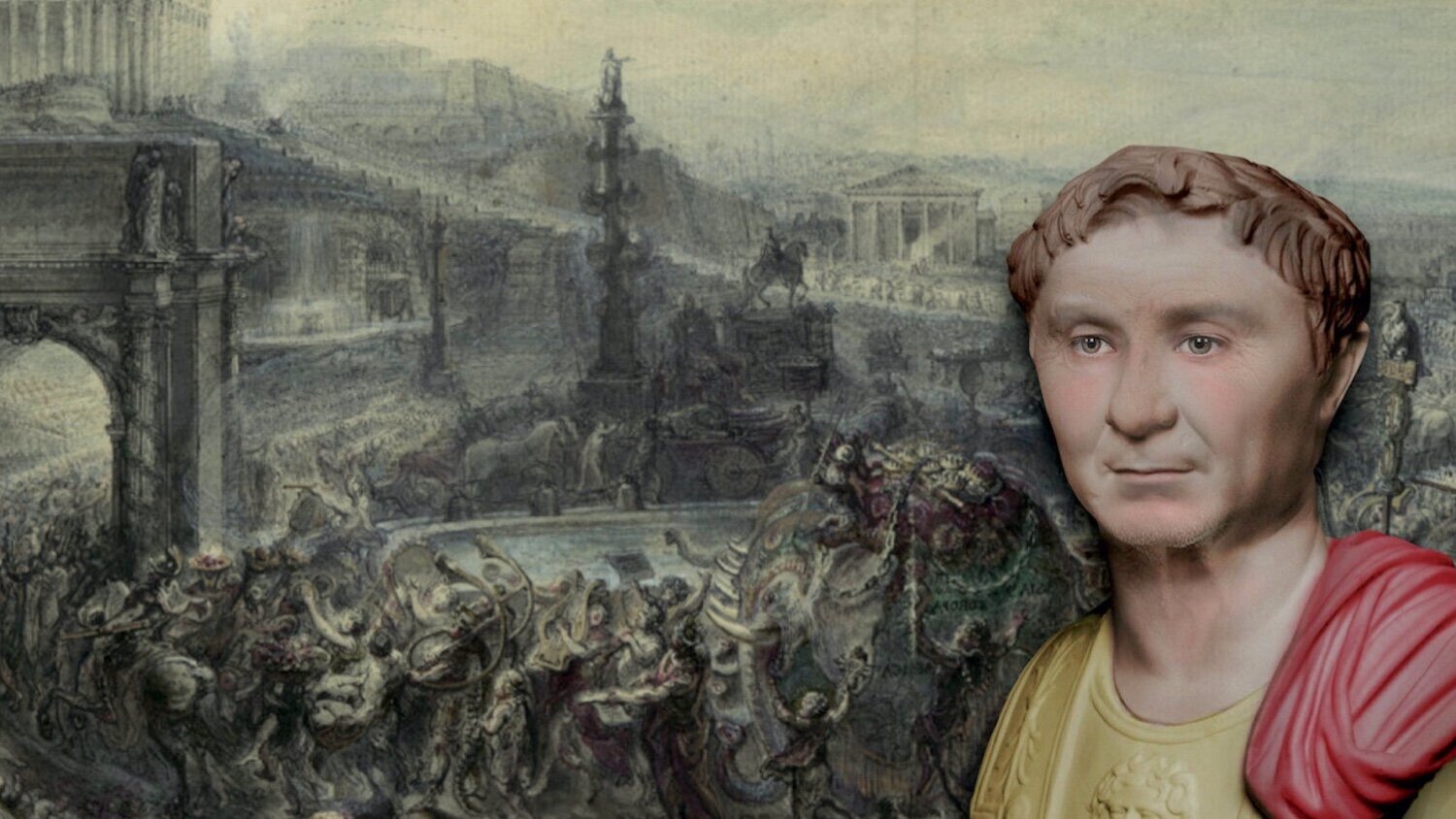Reconstruction of Pompey’s face based upon his bust found in the Licinian Tomb. Image from here.
More than a decade before the hobnailed boots of Pompey the Great scraped the pavers of the Jerusalem Temple,* the Roman commander was out West. On the Iberian Peninsula, he pursued a campaign against the guerrillas of Quintus Sertorius. This pursuit kept Pompey busy for five years, from 76 to 71 BC. In that half-decade, Pompey developed his military chops, gained a reputation for brutality, and earned a Roman triumph. The experience would serve him well.
Details of this “Sertorian War,” as it is called, are scattered, but may be pieced together. One thing is clear: Pompey’s forces suffered for a lack of supplies. This was especially true in the winter months. He and his men established military camps, pleaded for help from Rome, and billeted and foraged among the local folk. Classical sources mention two tribal people-groups in this context, the Vaccai (or Vaccaei) and the Vascones.**
Pompeiopolis is located in the area of the Vascones. Image adapted from here (accessed 9/21/2021). During the Sertorian War, the peninsula was a patchwork of people-groups. Their independent character and shifting alliances was a challenge to anyone who wished to control them.
These tidbits may be bundled with a more specific claim by Strabo. The geographer writes:
“The tribe of the Vasconians” is situated in the north, “where there is a city Pompelo or, as one might say, Pompeiopolis.”***
This city of the north was a chief site of the Vascon peoples.**** It also became a place of Romanization, as Pompey turned it into his headquarters for a season. Its old name would be exchanged for a new one. The city of Bengoda (a name known only from ancient coins) would become the “City of Pompey” or Pompey-polis.
Obverse and reverse of an hispanic denarius. On left is a bearded head with the name Benkoda in Iberian signs. On the right is a sword-wielding warrior on horseback with the name Barskunes (akin to Basque) beneath. 2nd or 1st century BC. Image from here (accessed 9/22/2021).
Only vestiges of this Roman settlement survive. Elements of an artisan neighborhood have been uncovered . . . and have slipped away again beneath the living city. Roman remains have been recovered, and overbuilt, tucked under a parking lot here or beside an access ramp there.
We followed fencerows into the Arga River basin.
As Bob and I navigated the river-washed foothills of the Pyrénées, we chatted of things past and things to come.
Long before this was Hemingway-country, it was Pompey-country. And while the robust figure of the American author is a feature in northeast Spain, memories of the Roman general are deeper, more visceral. Before the Spanish bull-ring there was a Roman bath. After all, this is Pompey-city. This is Pamplona.
We arrived in Pamplona, Spain.
Oh, and two other tidbits:
First, dismiss any hasty conclusion that the Italian city of Pompeii was named after Pompey. The likeness is accidental. Pompeii was founded in the 8th century BC, hundreds of years before the time of the Roman general.
Second, recognize that there were other Pompeiopolises. Pompey covered a lot of ground in his liftime. Another city that carried his name is located in ancient Paphlagonia (modern Turkey). One might call it Pompeiopolis of Paphlagonia. Hopefully, its mascot was not the hippopotamus. The Pompeiopolis Hippopotamuses of Paphlagonia is much too plosive (and pompous). I don’t think it would it fit on a t-shirt either.
¡Buen Camino!
*Stories of Pompey’s siege of Jerusalem are recorded by the Jewish historian, Josephus. See his War 1.123-54 and his Antiquities 13.398-14.97.
**See Plutarch, Life of Sertorius, 21 (English translation here) or Sallustius, Histories 2.75-76 (English translation here). For a modern assessment, see Philip Matyszak’s Sertorius and the Struggle for Spain (Pen & Sword, 2013).
***Strabo, Geography 3.4.10. Find the English translation here.
****The Vascones inhabited the area between the upper course of the Ebro river system and the Pyrenees Mountains. They are believed to be the ancestors of the Basque peoples.
We have a full slate of trips to the Bible Lands ready to launch in 2022. One departs New York for Israel on March 12 and returns on March 25. This high-energy study tour will move light and fast, so pack your hiking shoes! Walt Harper, professor from Central Christian College of the Bible and Jeff Snell from Johnson University will assist with teaching duties on this one. For more information click here or contact me at markziese@gmail.com.





